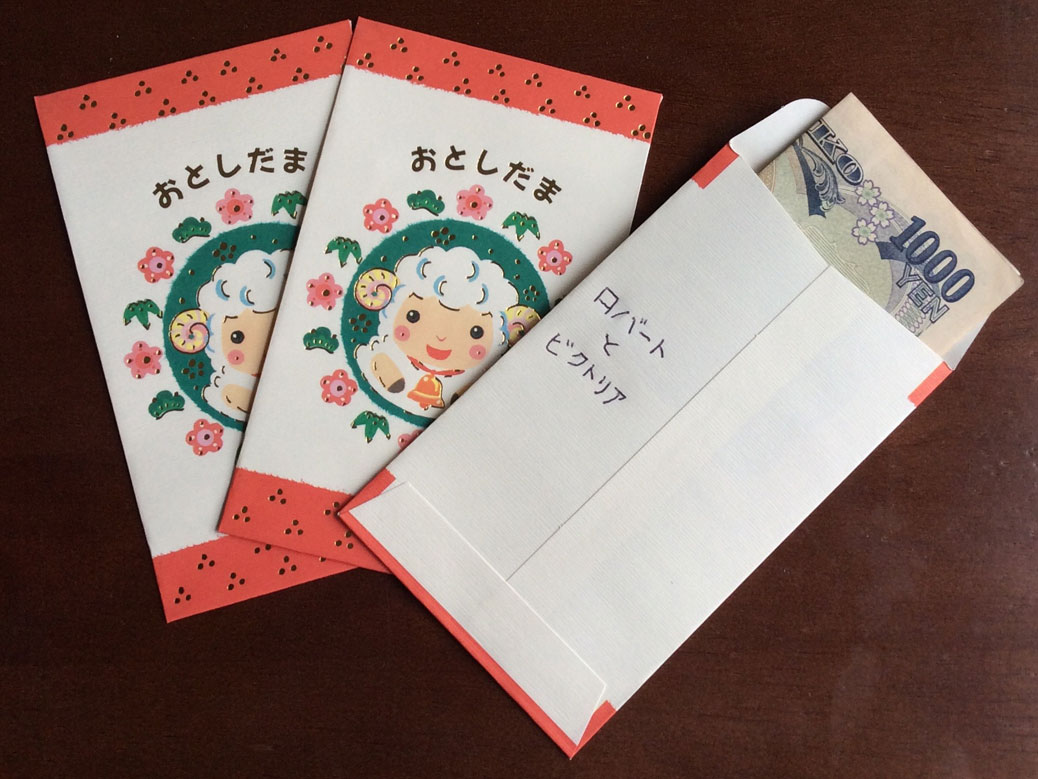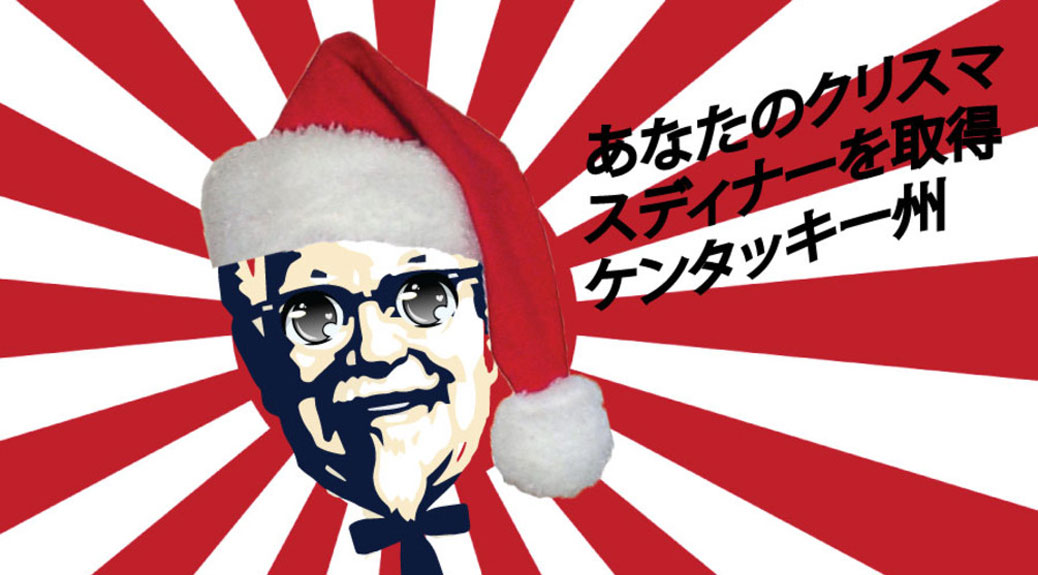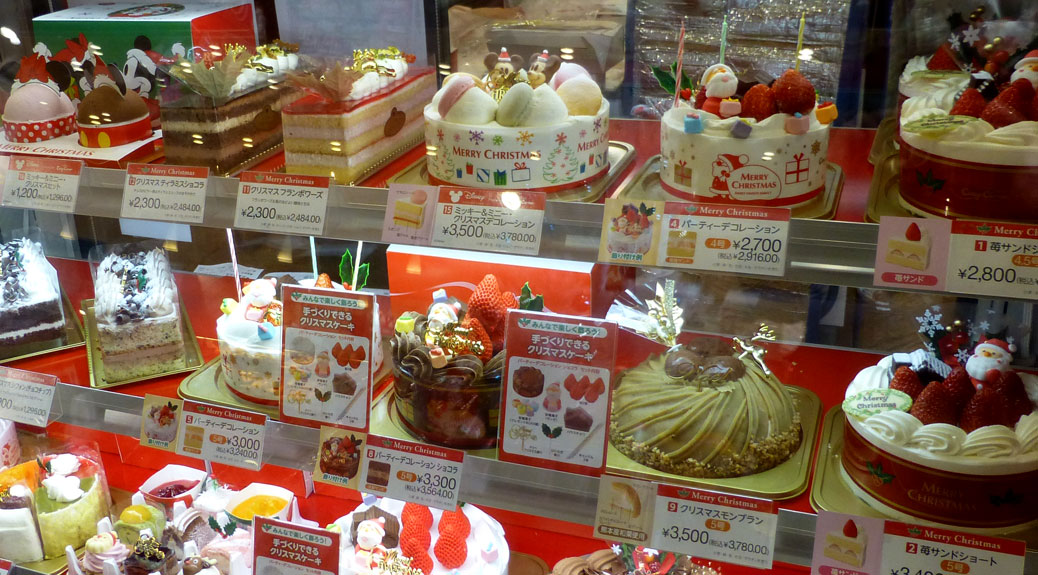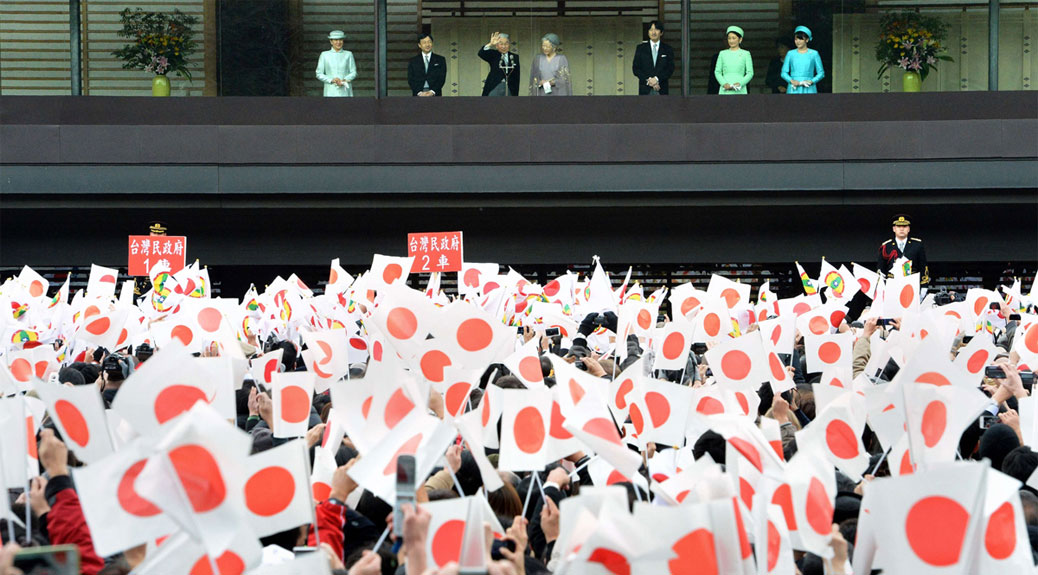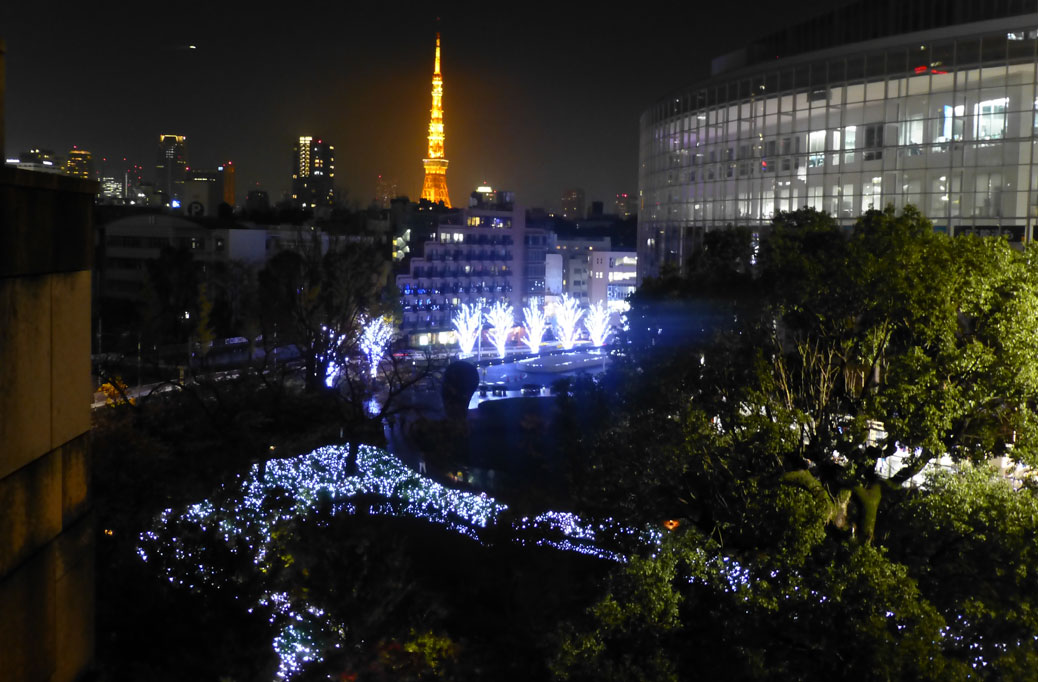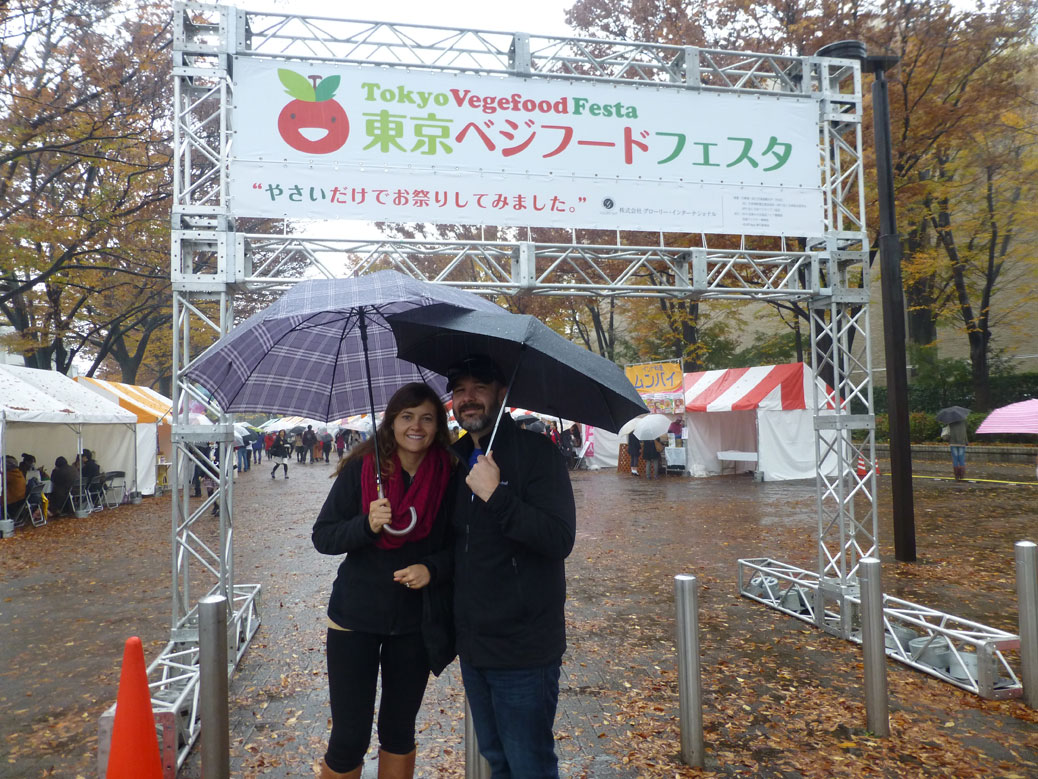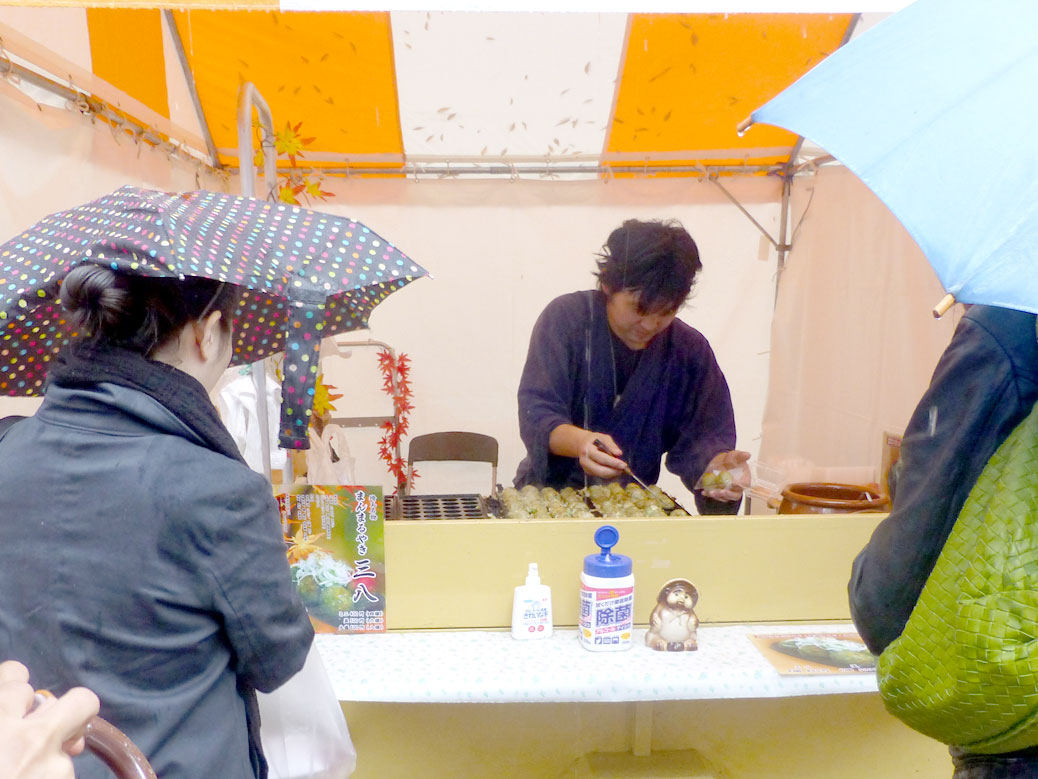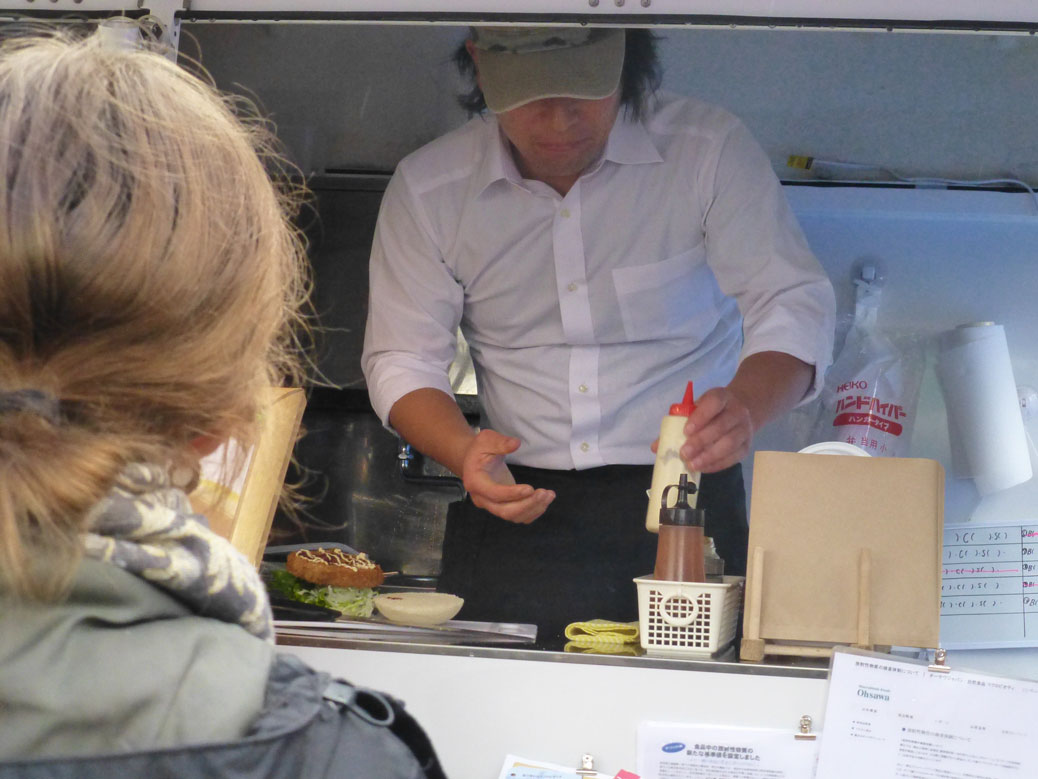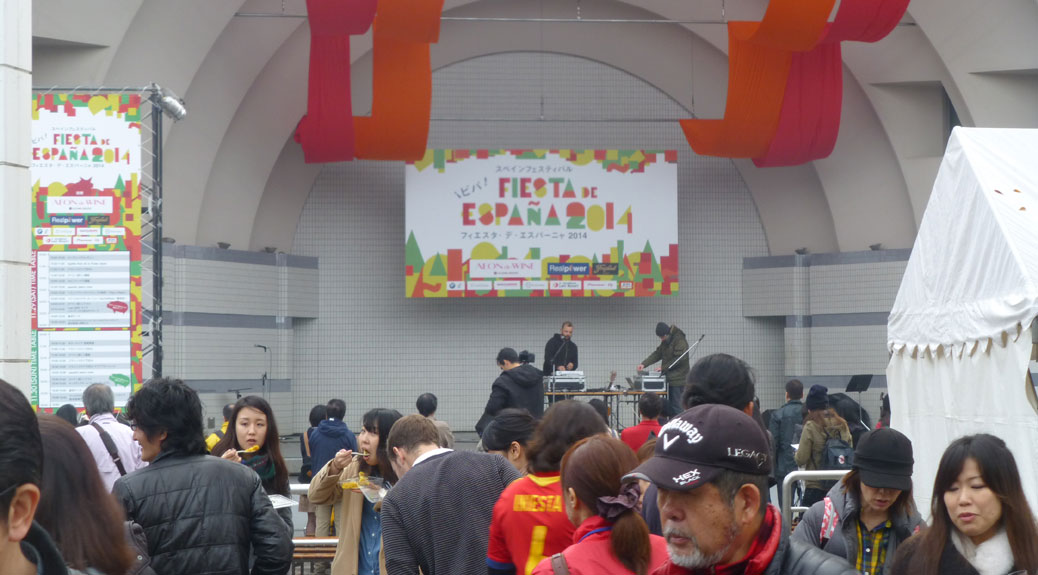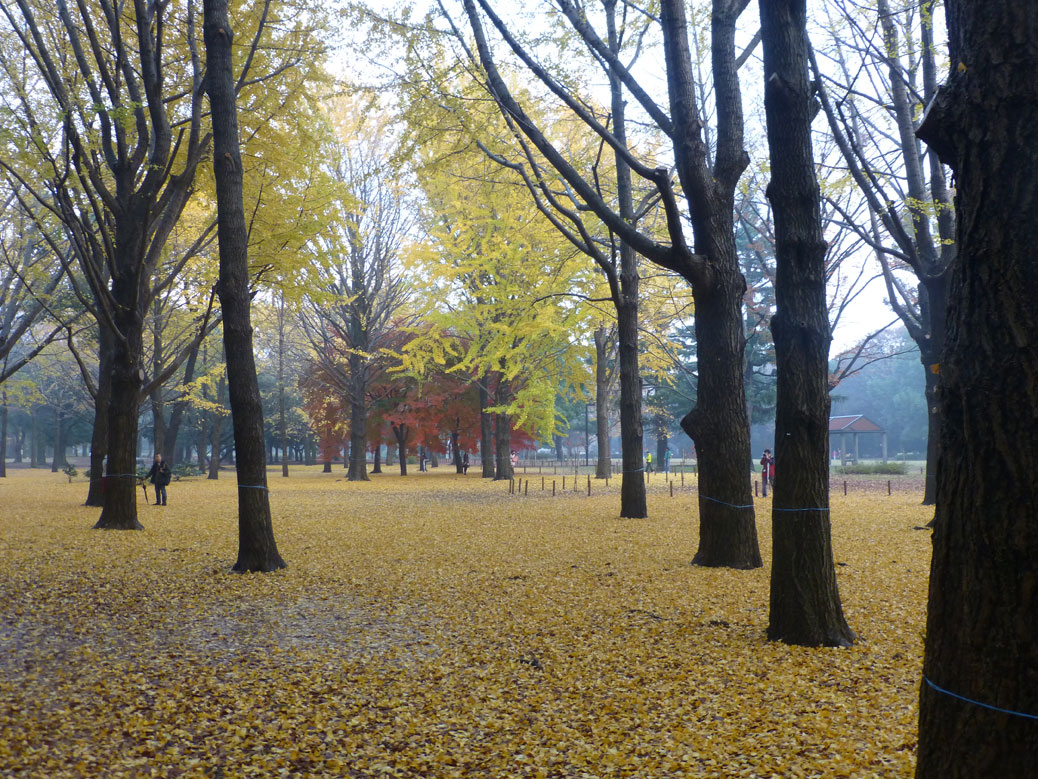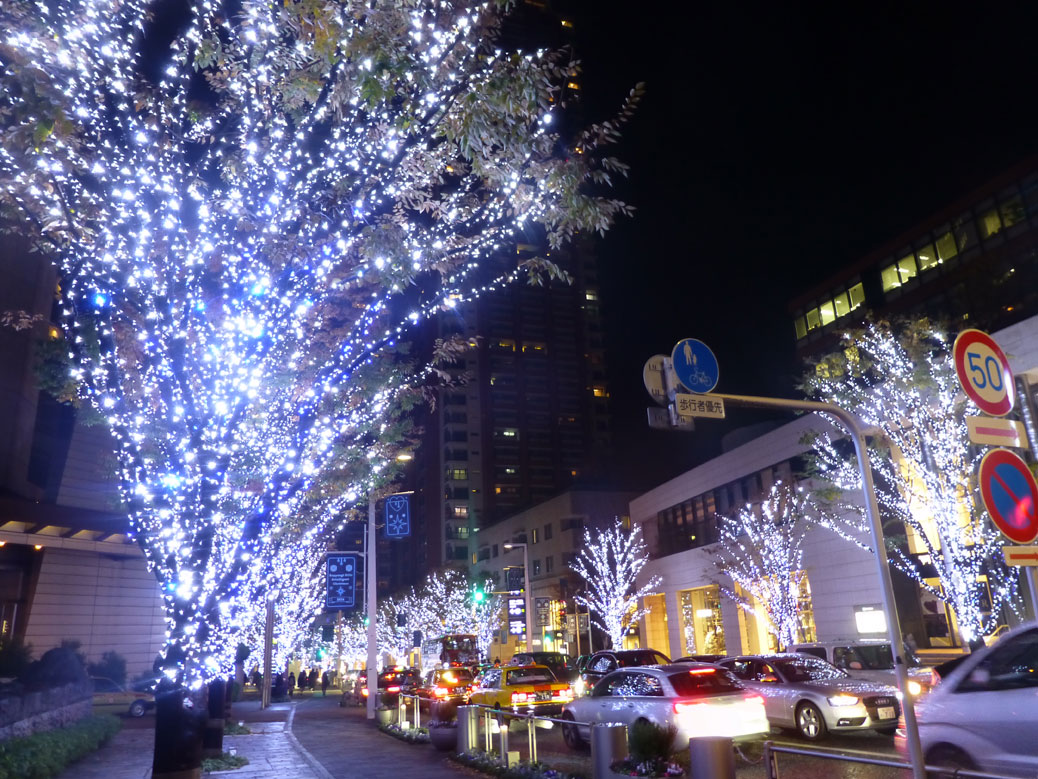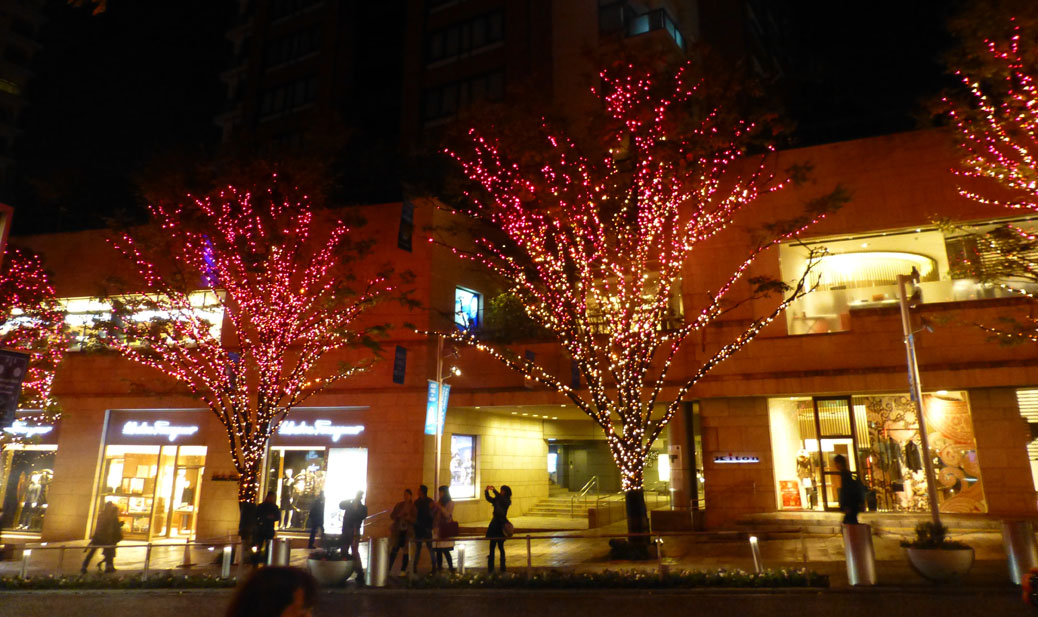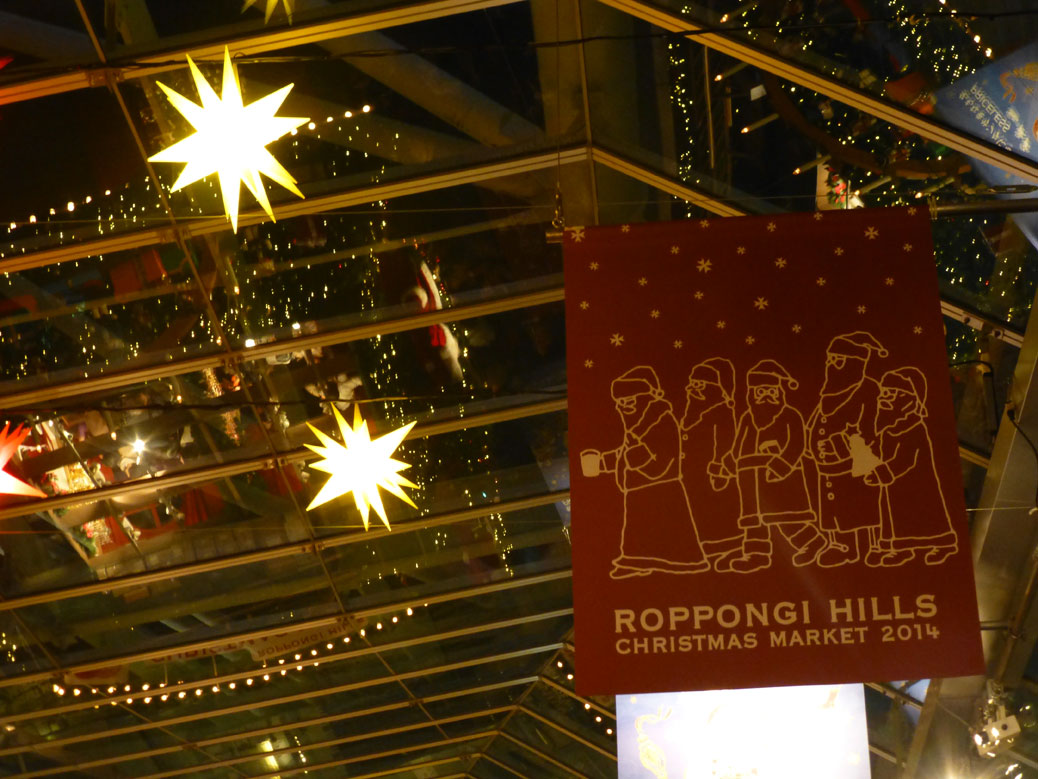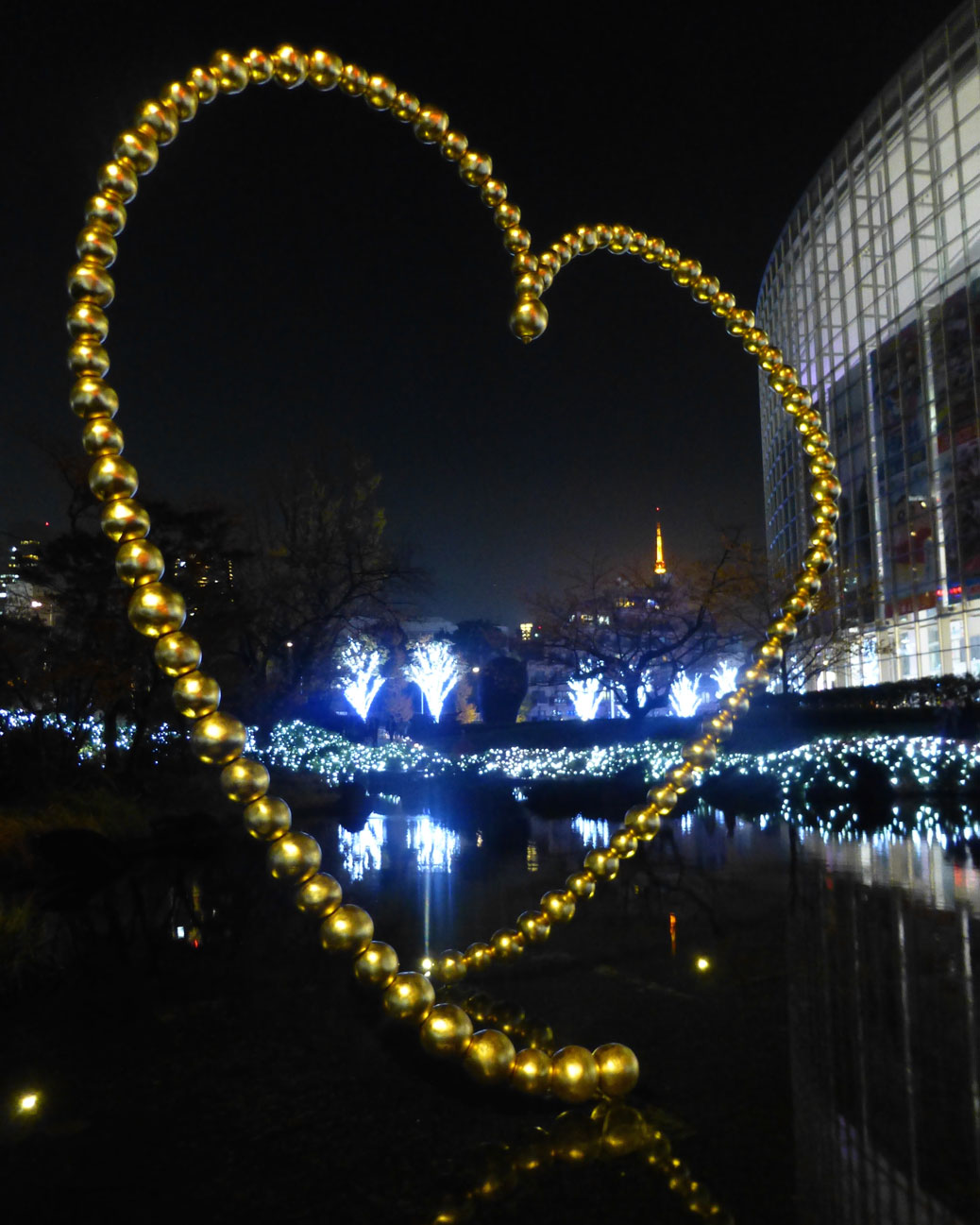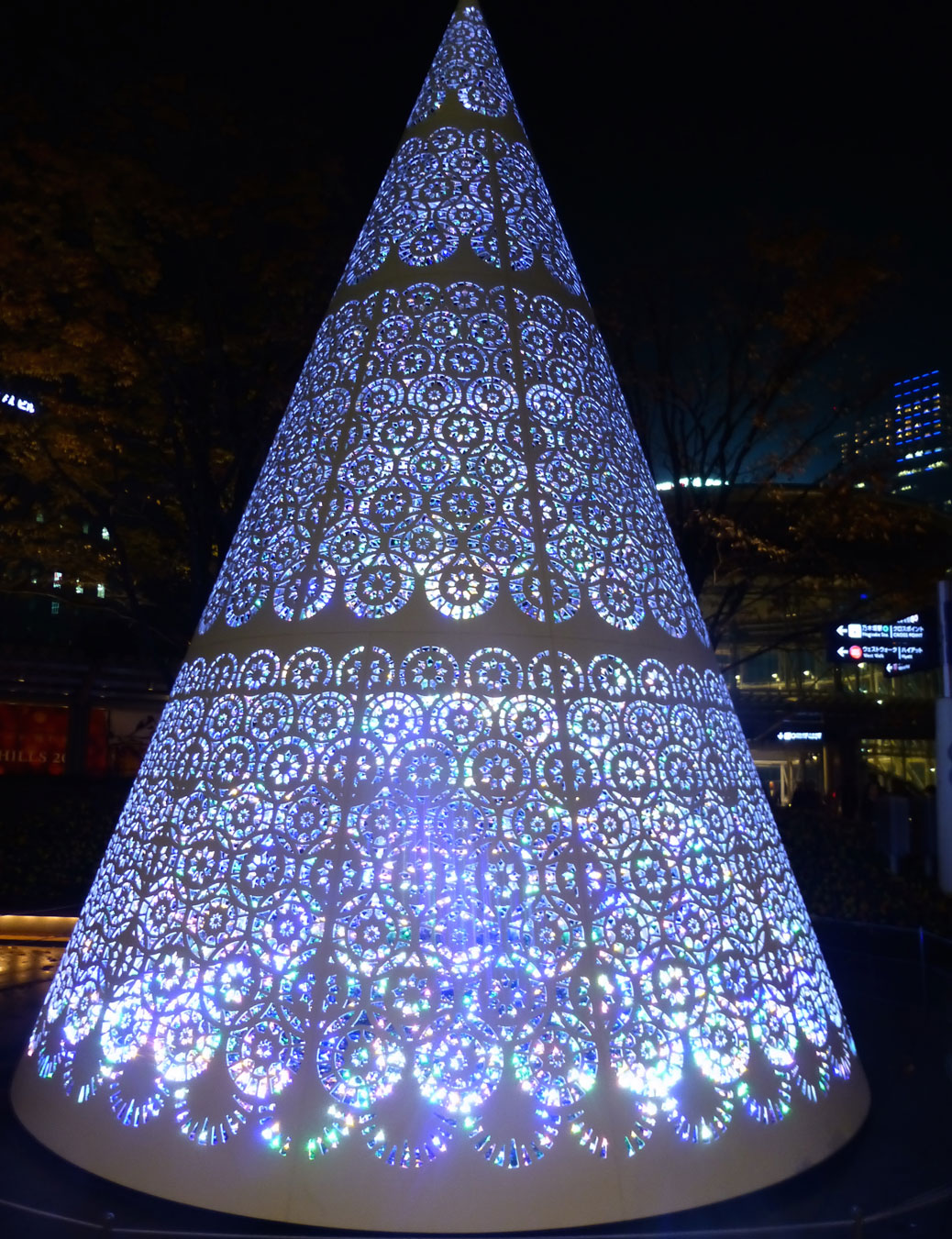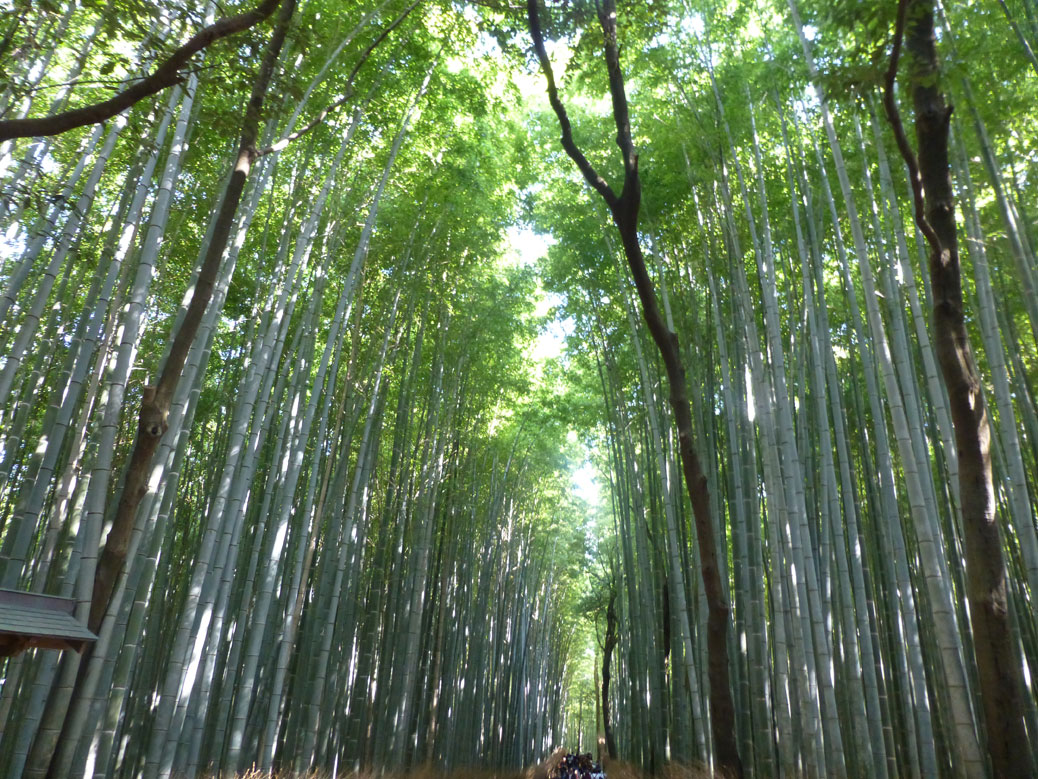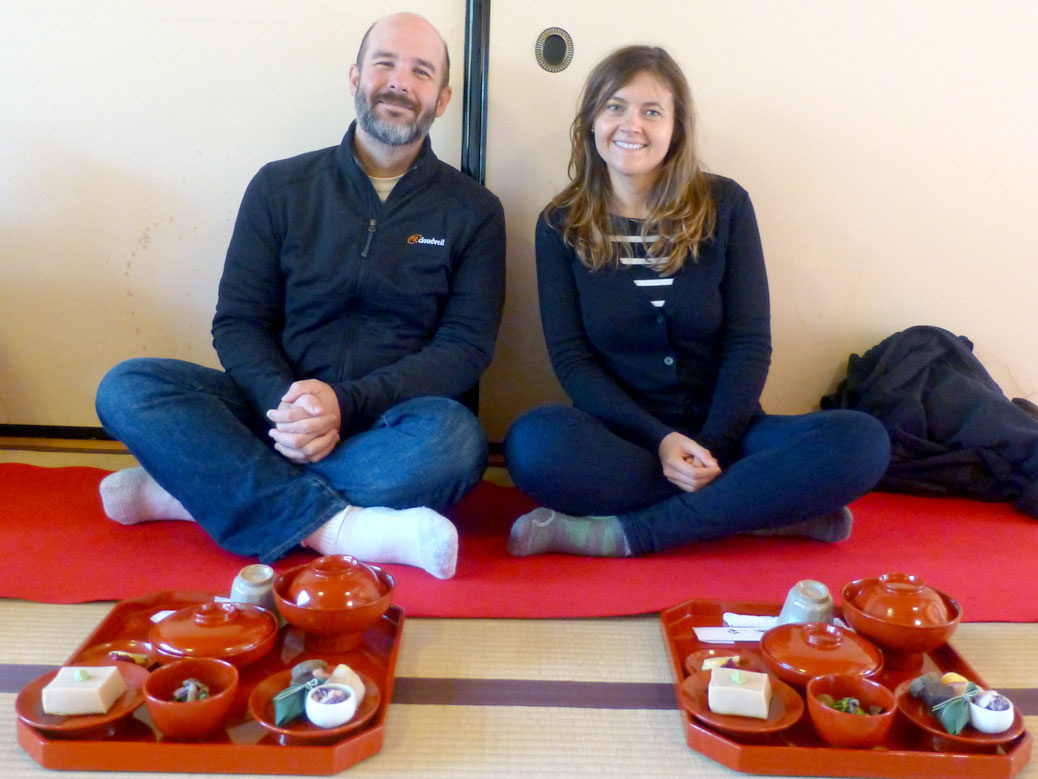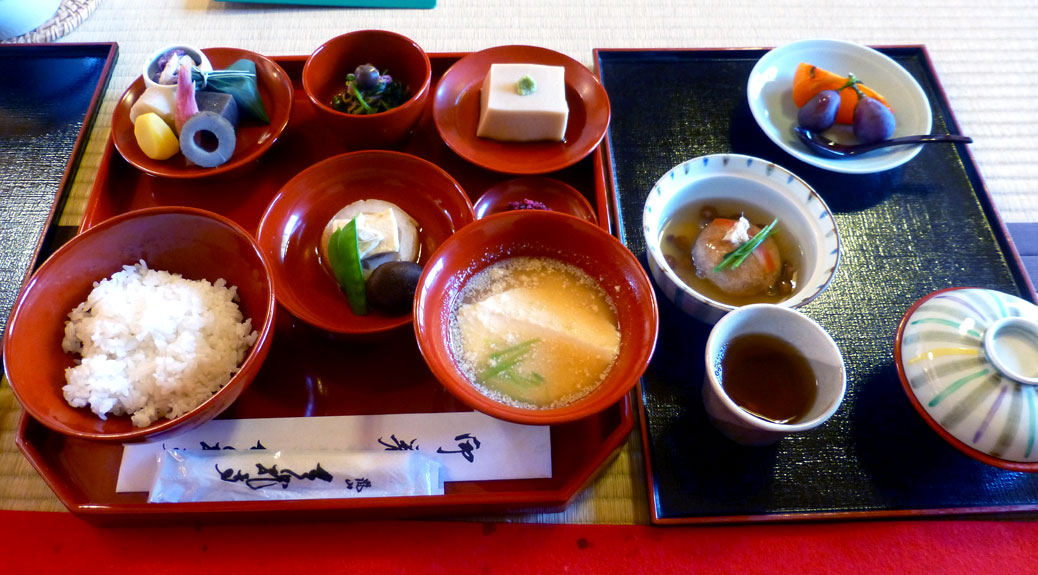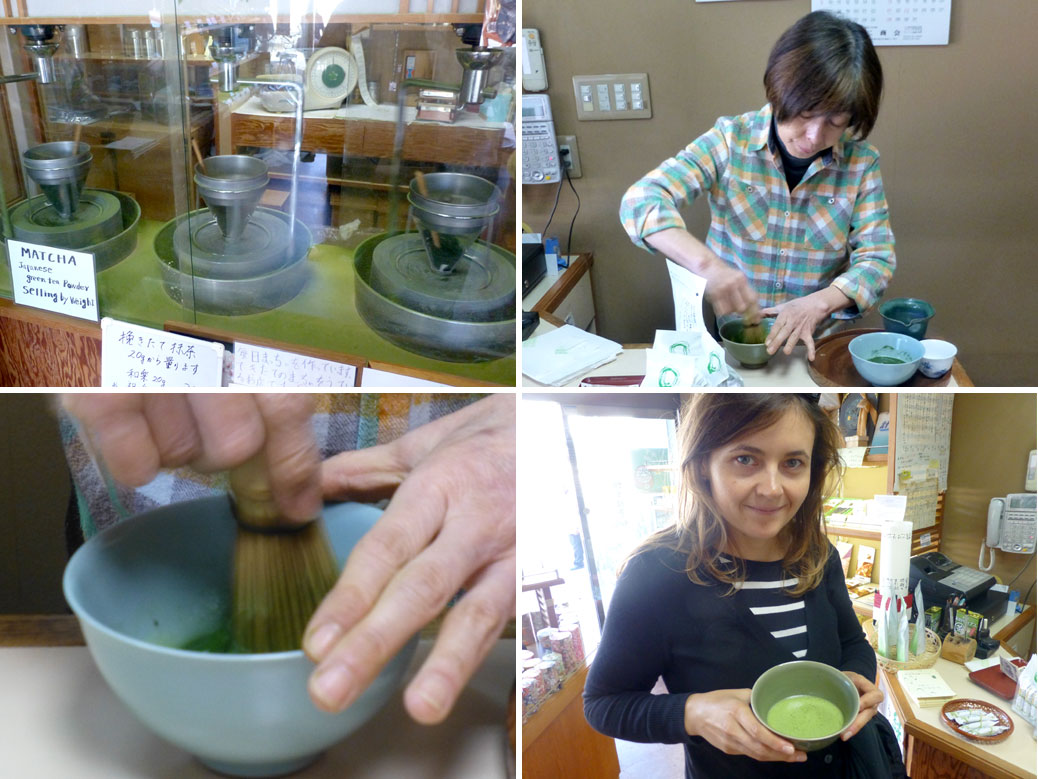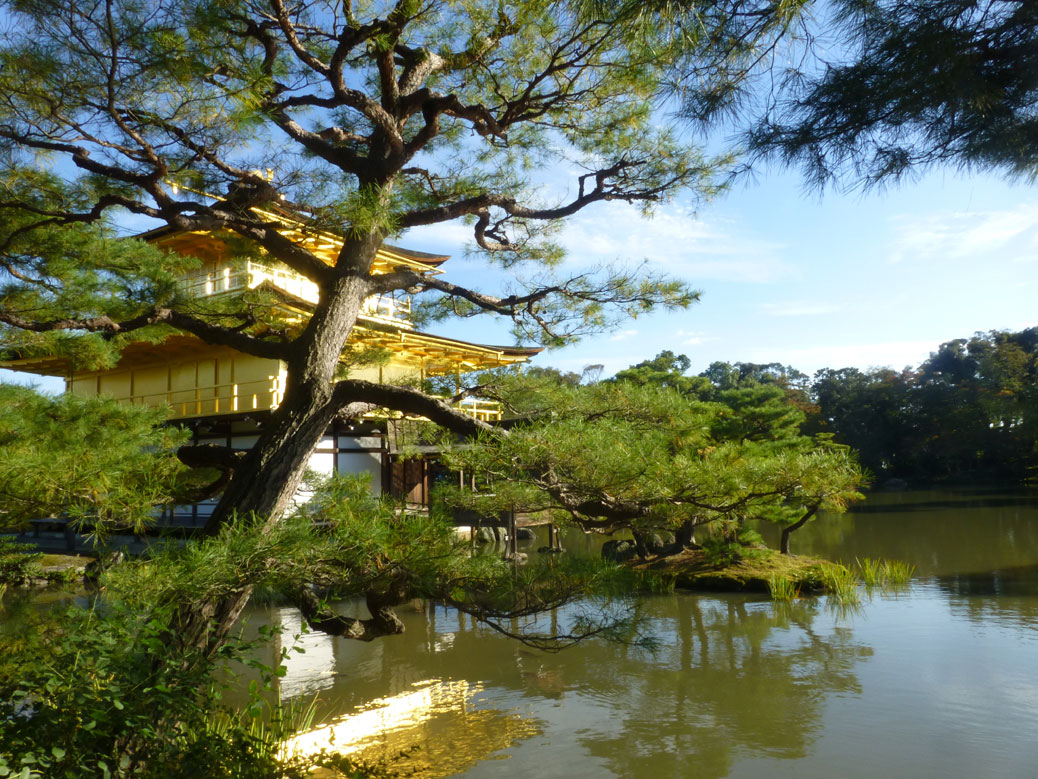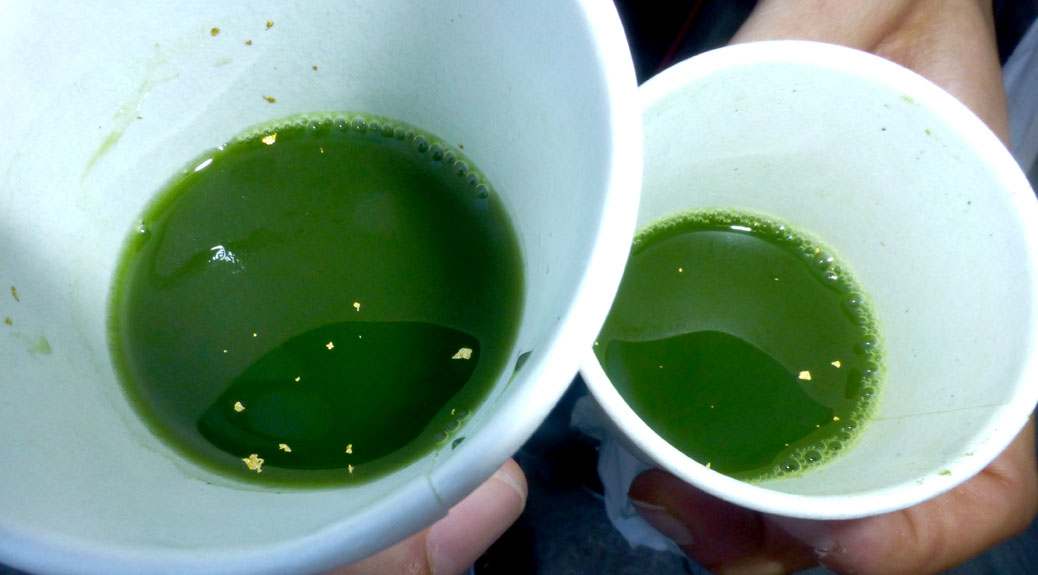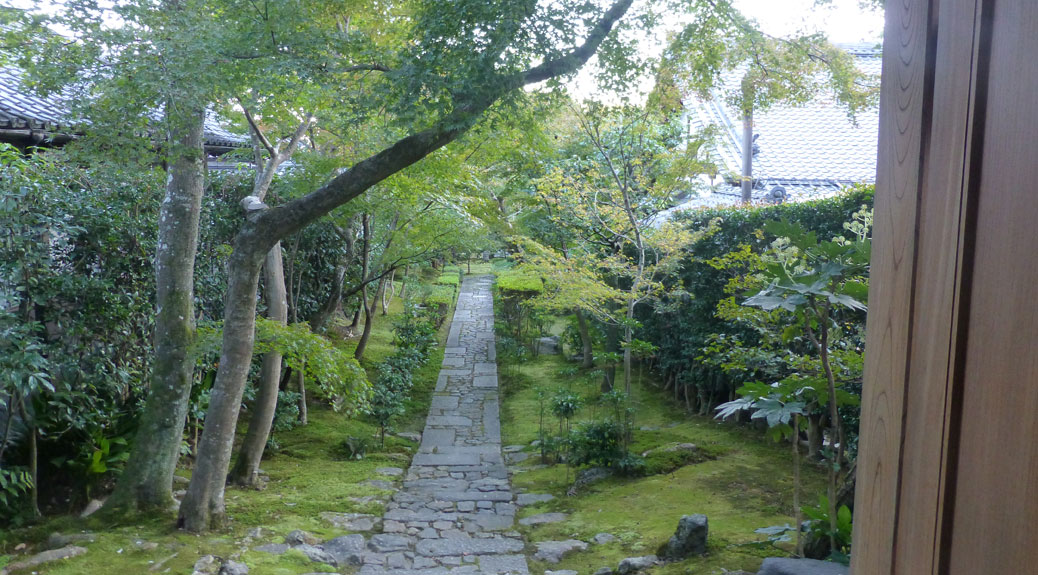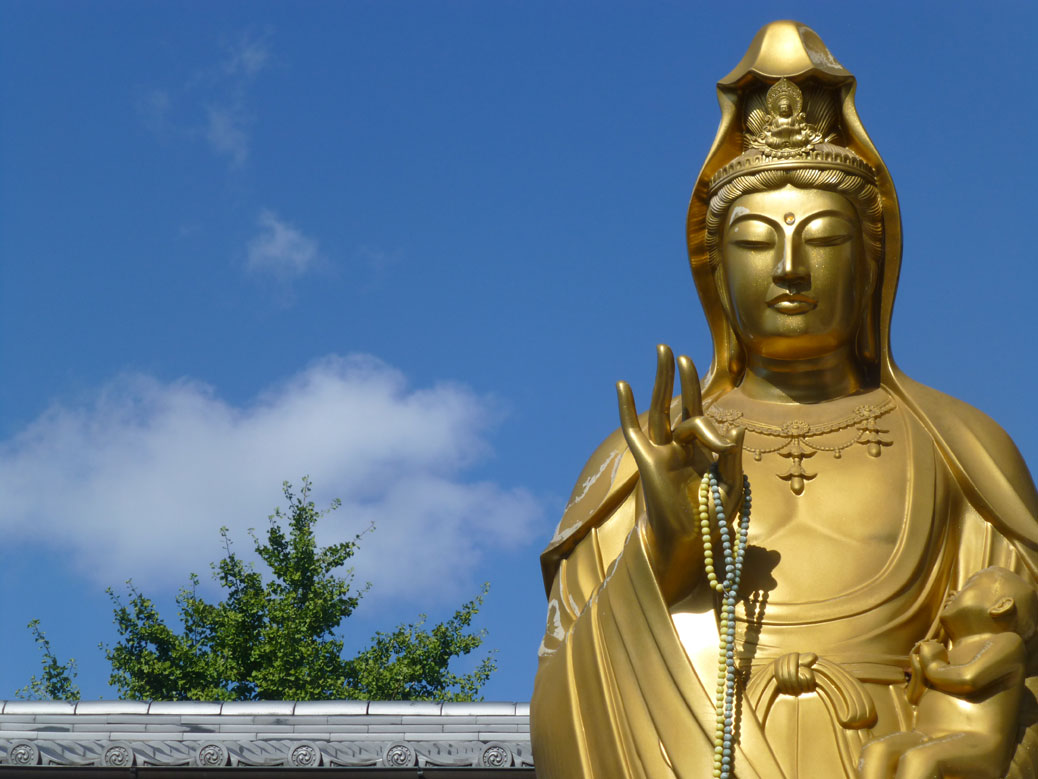Robert and I love traditions. And we go all out. Instead of focusing on Christmas activities this year, we set our sights on Japanese New Year traditions. We were in luck because Japan is steeped in traditions and we were on a mission to try them all. Here is our journey into 2015, Year of the Sheep!
Decorations
Sometime in early December, we started noticing that our local grocery stores started to put up these odd displays. What do round plastic disks, mandarin oranges, bamboo, straw, rope and pine branches have in common? They are parts of a shrine or decoration that is put out in the home to honor the gods. First, the “kagami-mochi” is two round rice cakes, usually with a real or plastic mandarin orange on top. This is part of a shrine placed inside the home. I asked a student if you’re supposed to eat these rice cakes and I guess the answer is no!
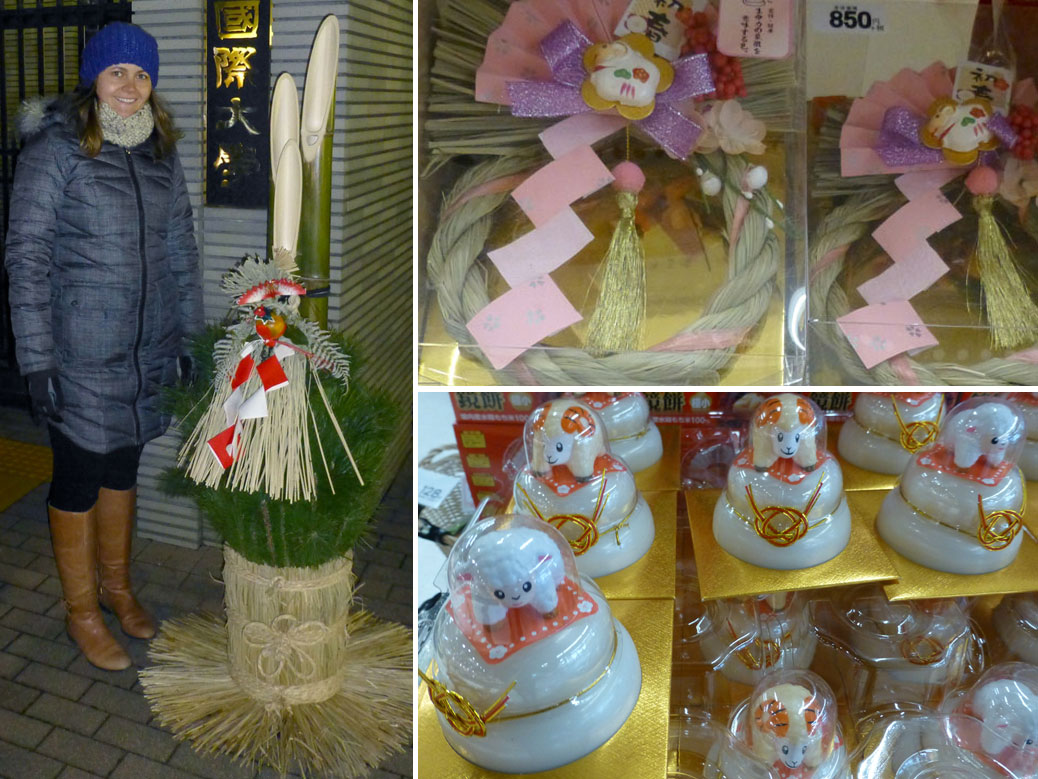
Next, “kadomatsu” is made of three, large bamboo sticks and pine branches and are put in the front of the house. These are to house the spirit until January 7; after which they are burned to release the spirit. Last, the “shimekazari” is a straw and rope decoration that is hung on the door to protect from evil spirits.
We did not put up any of these in our home, but it was fun to walk around our neighborhood and notice the varying ways our neighbors practiced this tradition.
Postcards
We also started noticing that while there were some Christmas card displays, they were largely outnumbered by stacks of postcards with 2015 and its Chinese zodiac sign, the sheep. “Nengajo” are cards you send to loved ones wishing them Happy New Year. We decided to send a handful to relatives and those who sent us a Christmas card. The Japanese Post works overtime to ensure that the cards are delivered on January 1.
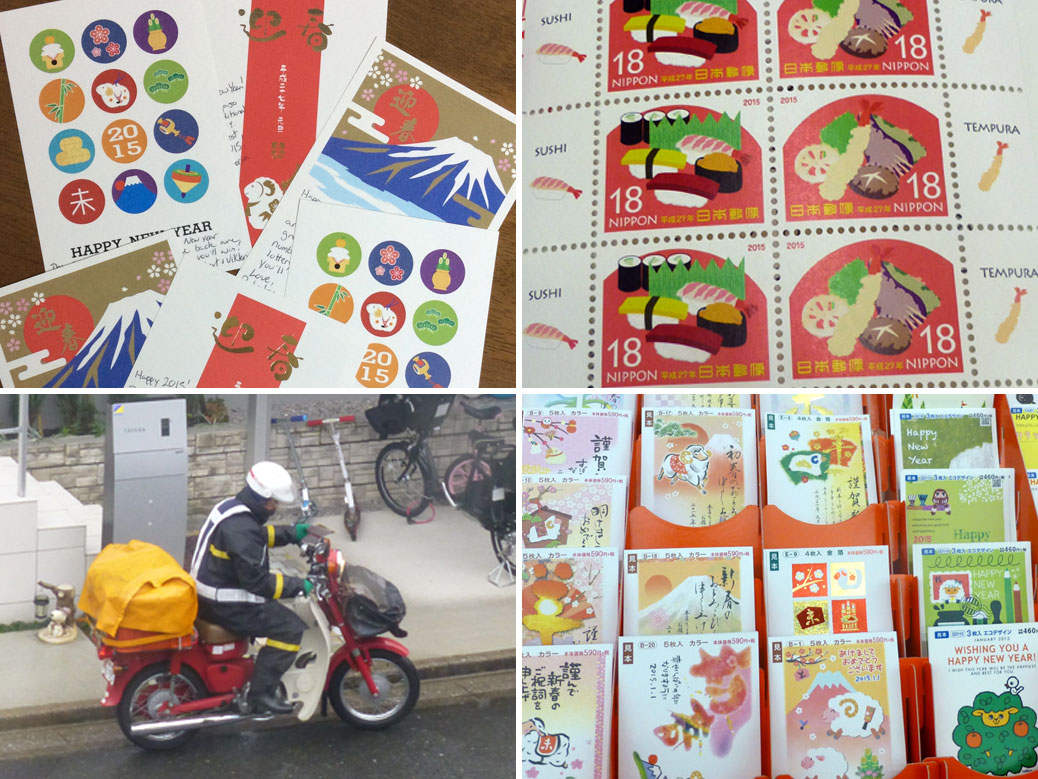
The postcards have lottery numbers on them. The winners are announced in mid-January and include prizes like washers, dryers and TV sets. Maybe a Cascadian Abroad reader will be a winner?
New Year’s Eve Variety Show
New Year’s Eve (NYE) is called “omisoka,” which means the last day of the month. We started our NYE by watching a famous talent show, “Kōhaku Uta Gassen,” on a public broadcasting channel called NHK. It’s a great honor for entertainers to be invited to perform on this show. It’s similar to Dick Clark’s New Year’s Rockin’ Eve, or whatever the current iteration is.
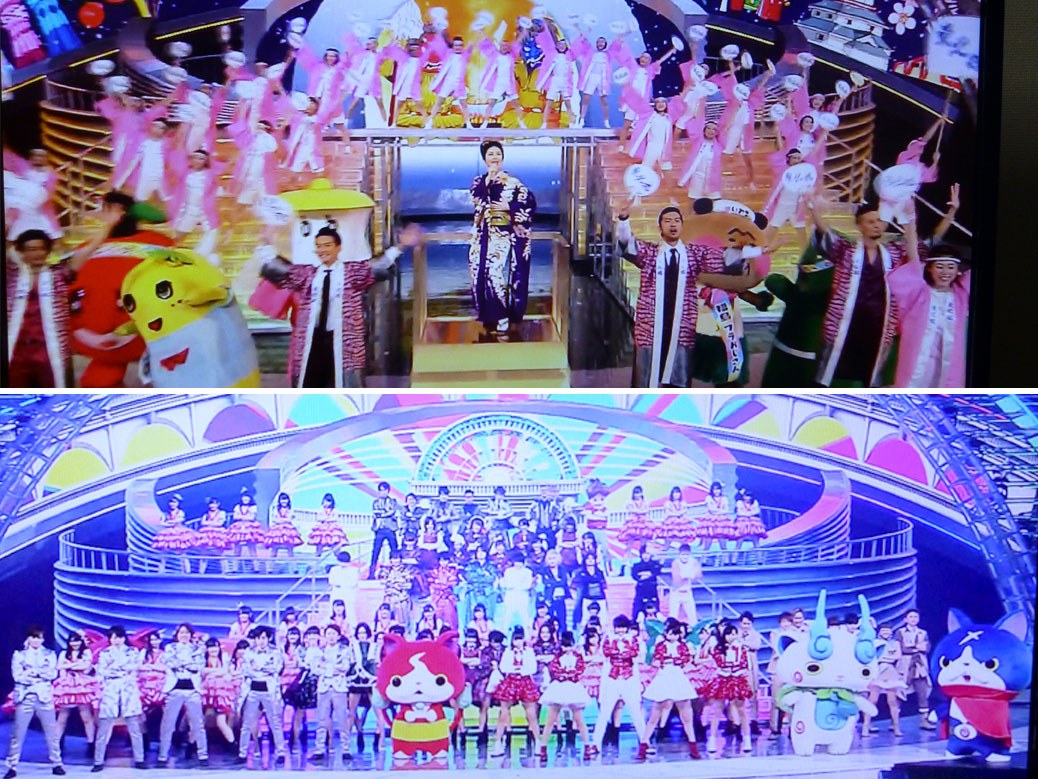
I thought the show was really entertaining. It’s a Who’s Who of Japanese actors and musicians. We spotted our favorite soap opera (the show is called “Massan”) actor, who happens to be an American. We saw some mascots like Funassyi and Jinbanyan (orange and white cat). We tried to avoid getting the Japanese version of “Let It Go” stuck in our head.
Soba Noodles
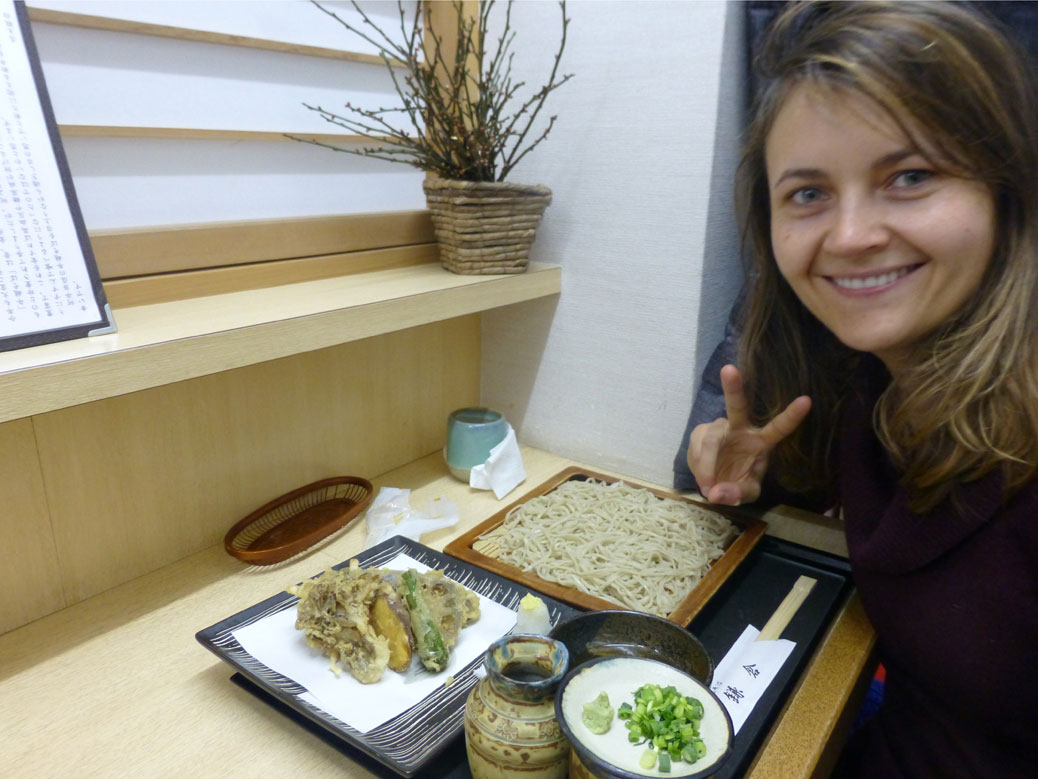
After watching a little TV, we headed out to Kawagoe in search of a meal. “Toshikoshi soba” is a traditional meal eaten around midnight to ward off evil spirits before the New Year. We found a lovely restaurant that made its own buckwheat noodles near the shrine we were planning to visit. I’ve heard that sometimes the soba is one long noodle and sometimes it is in smaller pieces. We were given a little pot filled with the water the soba was cooked in to drink at the end of the meal. And hot tea and sake to warm up. Delicious! Oiishi!
First Temple Visit
“Hatsumode” is the year’s first visit to the shrine/temple. We thought about going to Tokyo, which has many large, famous shrines and temples. But with Tokyo NYE crowds projected in the millions, we thought it would be better to see what locals were up to!
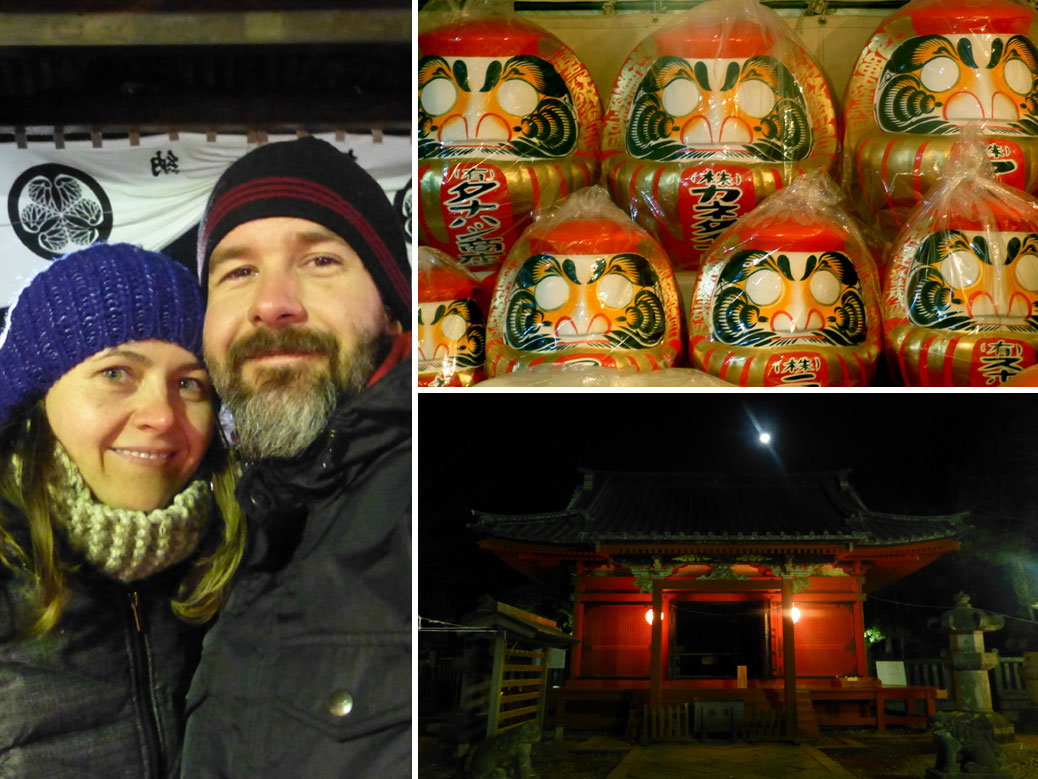
We walked to two local shrines, Naritasan Kawagoebetsuin and Kita-in, alternating our time between both. We stood in line at the former to ring the bell at midnight. The latter was bigger and had many festival food and vendors of good luck charms and “Daruma” dolls.
After midnight, the crowds started to multiply and line up to say the first prayer of the year.
Ringing the Bell
“Joya no Kane” are purification bells. If one listens to or rings the bell 108 times, evil desires may be destroyed. It can’t hurt, right? Shortly, before midnight we climbed the bell tower and each rung the bell. It was definitely one of my favorite experiences in Japan so far. We were the only white people and, while I was nervous that we would be thrown out as nonbelievers, no one seemed perturbed by us participating in their religious traditions.
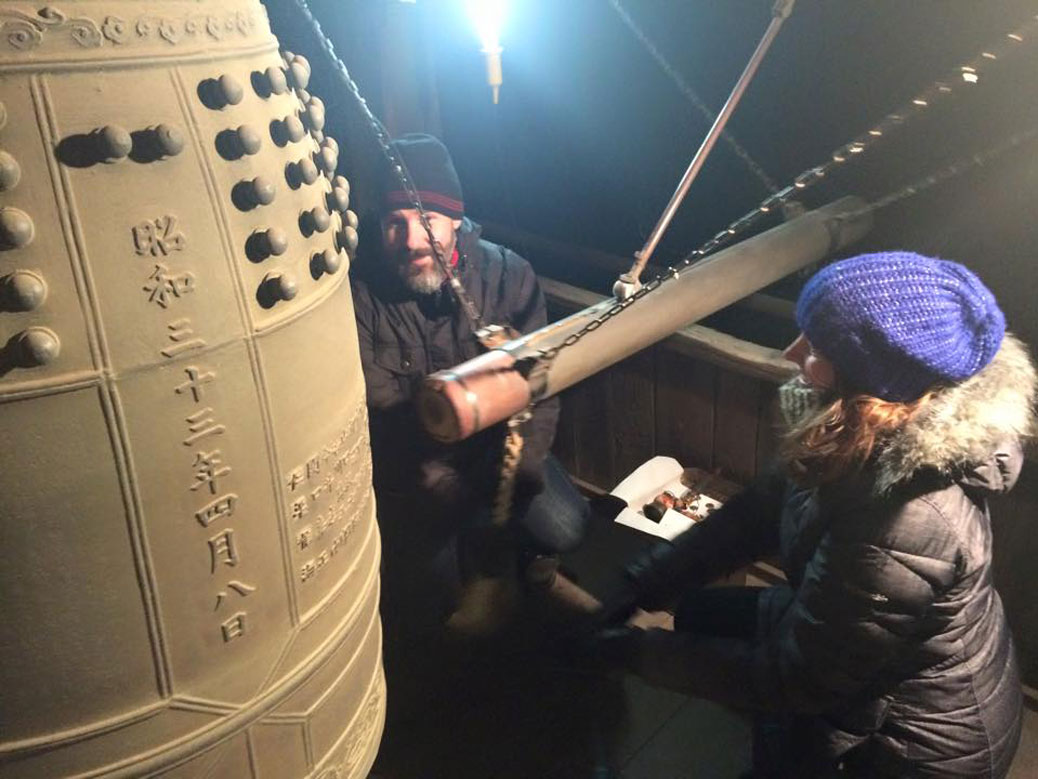
Before midnight, we heard a group count down “shi, san, ni, ichi” (four, three, two, one) and a few “Happy New Year” exclamations in English. The main temple bells started to ring. It was a subdued, but happy reaction.
We ran into friends at another temple later in the morning and rang the bell again with them. Doubling the purification of our evil thoughts, perhaps?
Money Envelopes
It’s a custom to give children money as a present for the New Year, called “otoshidama.” Similar to the Chinese custom you may have heard of, children are given money in a small envelope that can be red or decorated with designs appealing to children.
I asked some of my college-aged students whether they would still receive money and the answer was a resounding, YES! As long as a “child” is enrolled in college, they still receive money from parents and relatives. Popular amounts for children range from about $10 to $50 and for teenagers, upwards to $100.
We have a handful of small children living in our apartment complex so we decided to give “otoshidama” a try. No harm in fostering good will with neighbors, right? We presented the children with their envelopes (our name is written on the back so they know who it is from). I think our neighbors were shocked and embarrassed, which is a normal reaction to anything we do.
Lucky Grab Bags
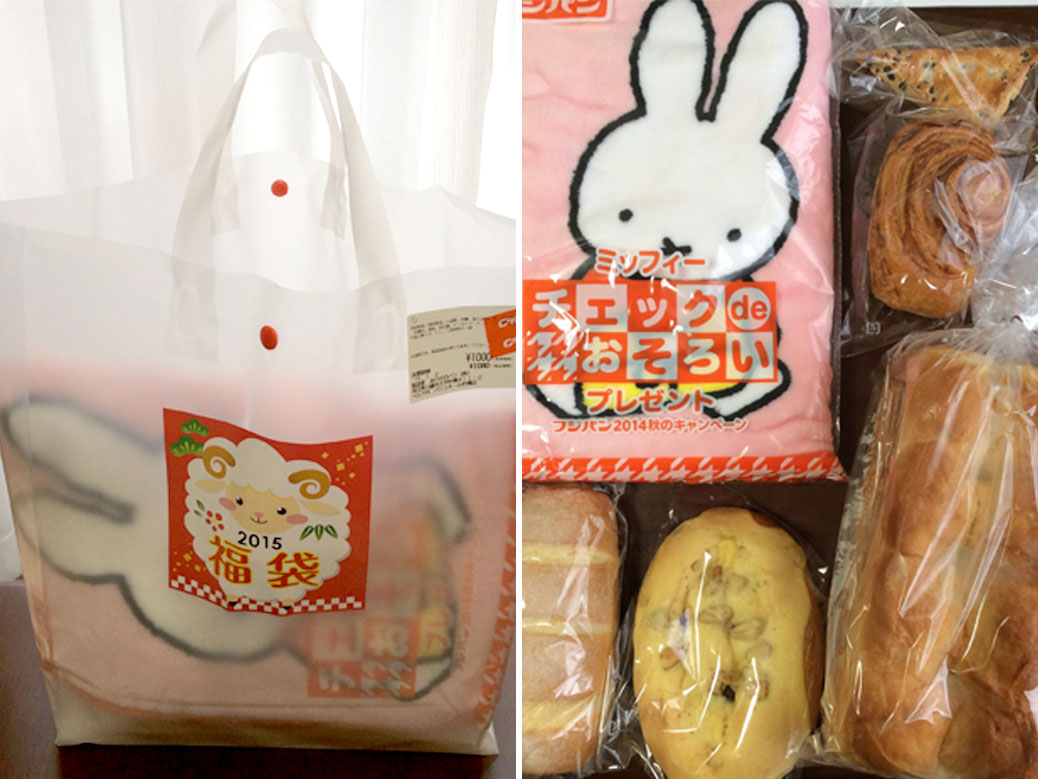
Otoshidama money can be saved for serious ventures or spent in stores promising New Year’s deals and grab bags called “fukubukuro.” Shopping is a popular Japanese hobby so we weren’t surprised by this tradition. And anything to jump start the economy, right? We decided to “grab” this bag in our local bakery filled with a cute blanket, a huge loaf of bread and some sweet breads. It was about $9.
Mochi Rice Cakes
“Zōni” is a traditional soup eaten for the New Year that has blocks of “mochi” rice cakes floating in it. We purchased a huge bag of mochi, which are small square blocks of rice flour. They are as hard as a brick and look like soap. We noticed long ago that our toaster oven has a mochi setting so in they went. You wouldn’t think so, but after a few minutes, they emerge as melty, chewy little cakes. They can also be cooked over a grill.
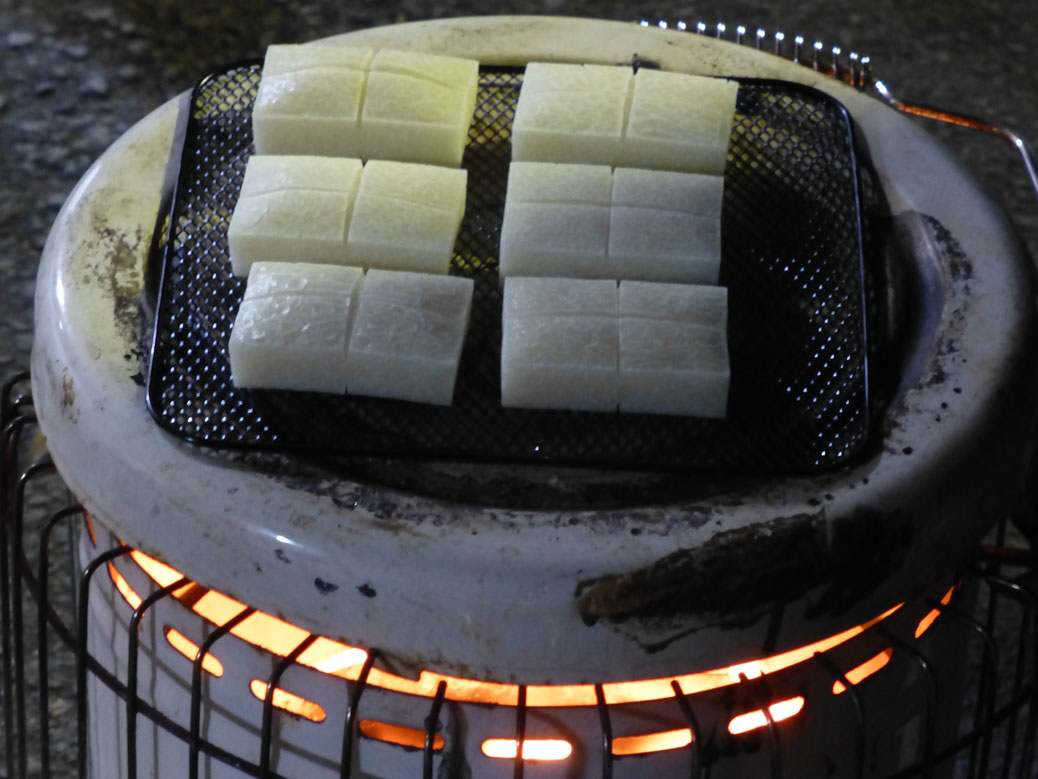
These rice cakes are so popular in the New Year festivities that sometimes people choke on them. Every year, a warning is issued, especially to the elderly. Chew your mochi carefully, y’all. There’s nothing really to compare mochi to in the states. It’s like a gooey, melty block of carbs. Yum!
Oh, how fun. Thanks for a great New Year, Japan.
Cascadian Abroad :45—Omisoka
Watch the video below for footage from the NHK New Year’s special and the ringing of the bells at Naritasan Kawagoebetsuin.


